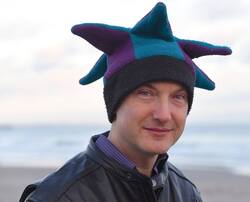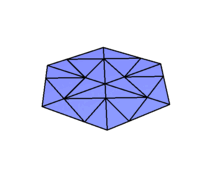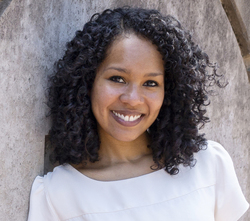Spring 2022 Virtual Section Meeting
Our spring meeting was held virtually on Saturday, April 2, 2022, 9am--1pm.
Schedule
Welcome: Announcements / technical issue resolution / social time
8:45 -- 9:00
Invited Speaker: Thomas Hull (Western New England University)
9:00 -- 9:45
Business Meeting: Announcements, awards presentations, section election
9:45 -- 10:05
Contributed Talks: Undergraduate, graduate, and faculty speakers
10:15 -- 11:30 (4 concurrent sessions; see schedules on subpages)
Undergrad/Grad abstracts
Faculty abstracts
Invited Speaker: Tai-Danae Bradley (Alphabet Inc / The Master's University)
11:45 -- 12:30
Social Activities: Student activity, faculty discussion
12:30 -- ??
Here is a list of math videos shared by meeting participants during our social time.
Invited Speakers
 Thomas Hull (Western New England University)
Thomas Hull (Western New England University)
Mathematical Origami and its Myriad Applications
Origami, the art of paper folding, has been practiced in Japan and all over the world for centuries. However, the past decade has witnessed a surge of interest in using origami for science. Applications in robotics, airbag design, deployment of space structures, and even medicine are appearing in the popular science press. Videos of origami robots folding themselves up and walking away or performing tasks have gone viral in recent years. What's more, the National Science Foundation has recently found origami valuable enough to fund millions of dollars for studying engineering and science applications of origami. But if the art of paper folding is so old, why has there been an increase in origami applications now? One answer is because of mathematics. Success in modeling origami mathematically has advanced our understanding of how folding processes work, which then led to an increase in applications. In this presentation we will explore why origami lends itself to mathematical study and see some of the applications that origami-math has inspired.

 Tai-Danae Bradley (Alphabet Inc / The Master's University)
Tai-Danae Bradley (Alphabet Inc / The Master's University)
Entropy + Algebra + Topology = ?
In this talk, I’ll take the audience on a leisurely tour through the intersection of information theory, abstract algebra, and topology by describing a small connection between them. It is a theorem that gives a new way to think about Shannon entropy from a pure mathematical perspective, namely a correspondence between entropy and functions on topological simplices that satisfy an equation akin to the Leibniz rule.
Student Activity
Primel -- View Flier (PDF)
Faculty Discussion


